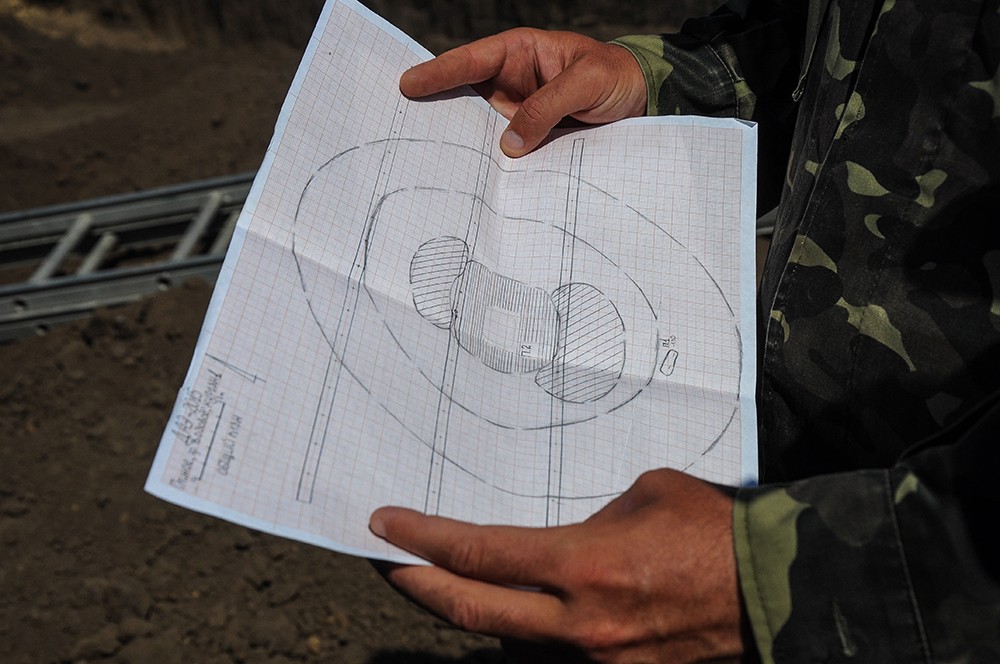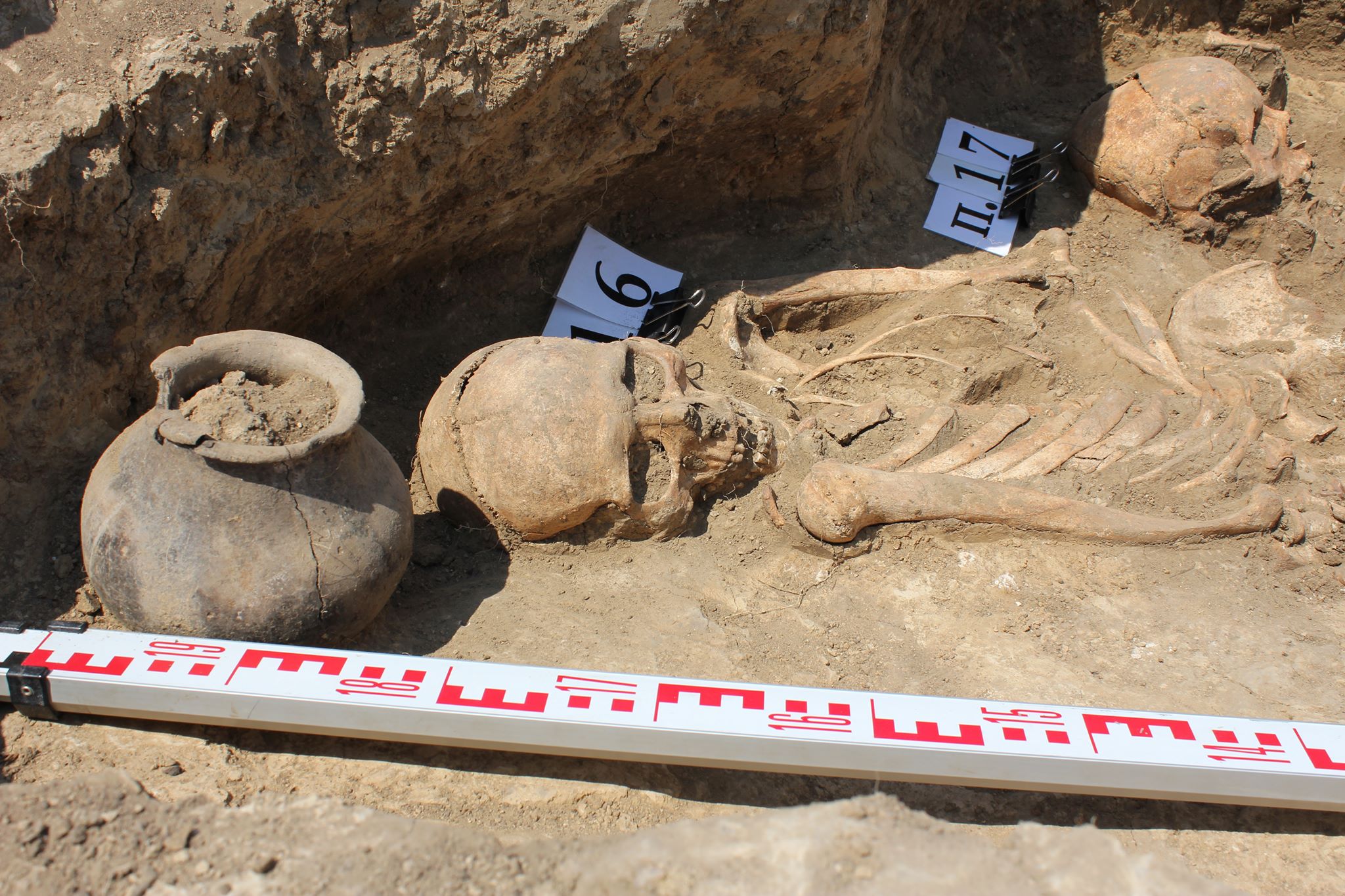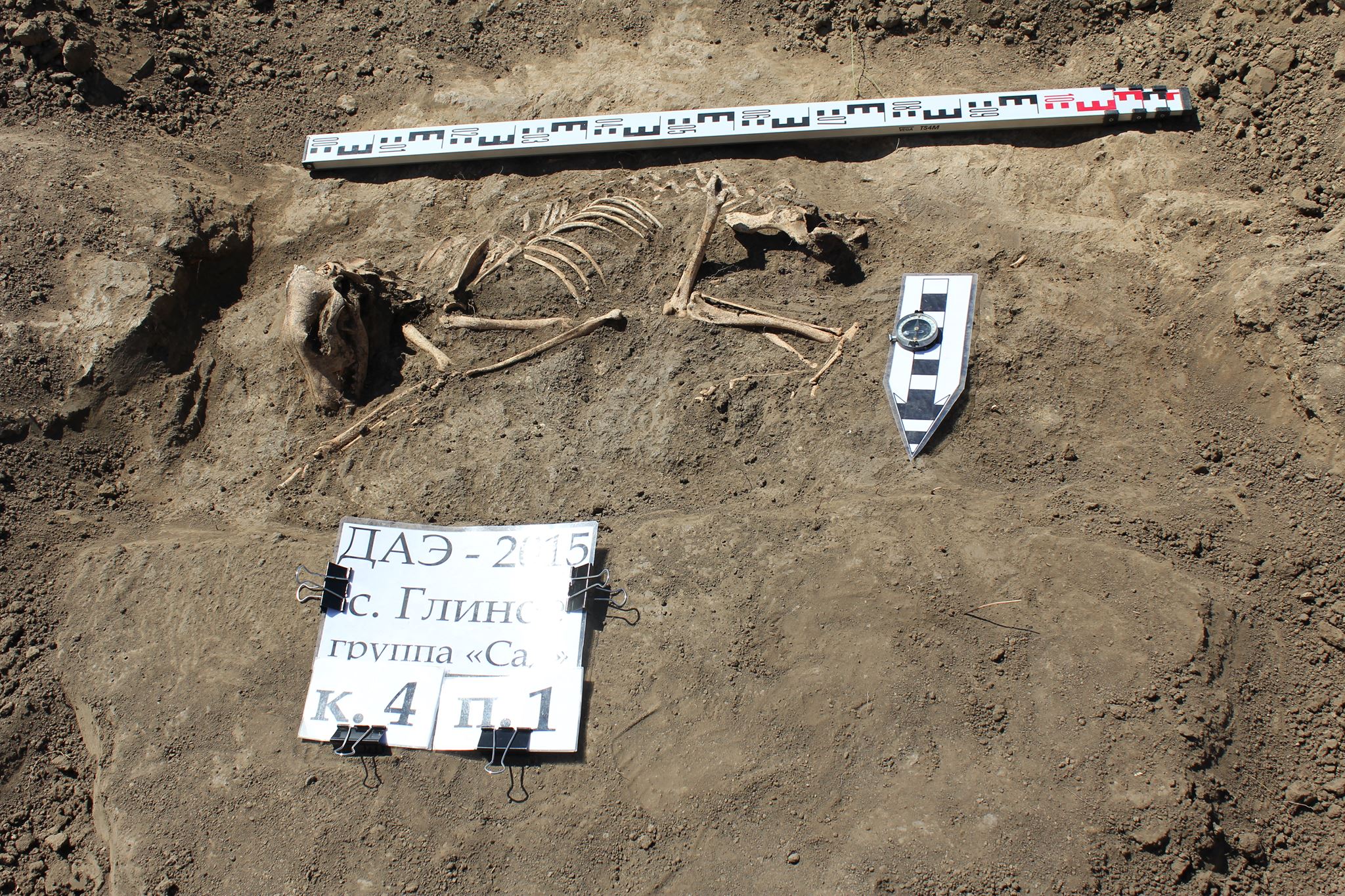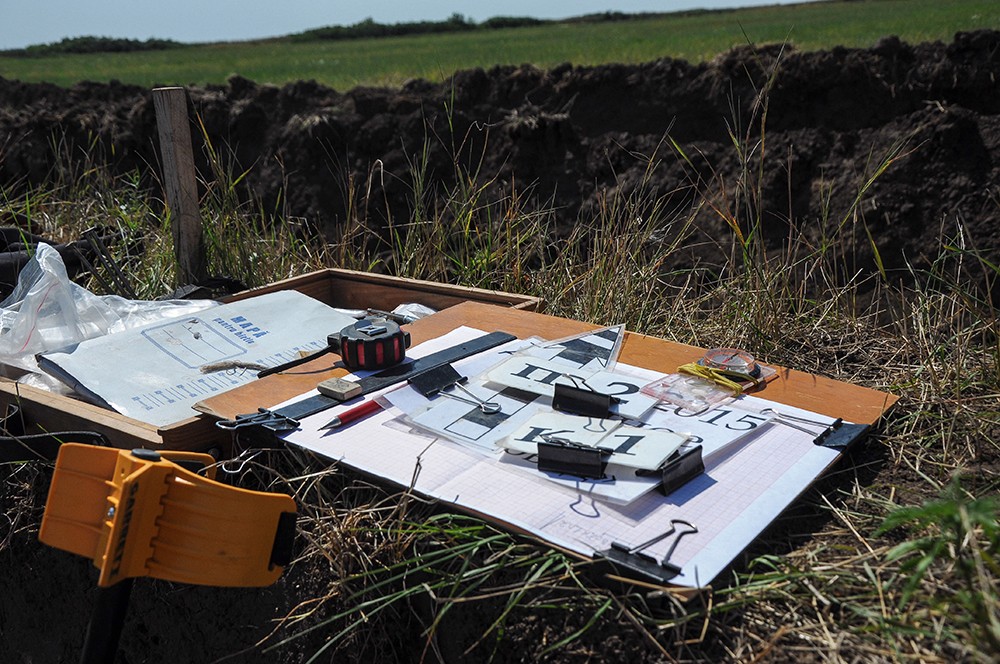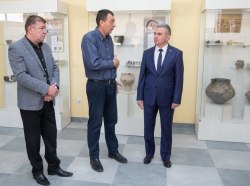In the past two months the scientists have investigated four kurgans near the village of Glinoye, Slobodzeya district. Ancient mounds were eliminated over 30 years ago during agricultural works, and so the archaeologists did not particularly calculate on success. However, in practice it did not turn out so predictable. One of the kurgans was full of surprises.
After upper layers of soil were topped with a bulldozer, under the remnants of the mound the researchers discovered eight tombs and the survived elements of kurgan constructions: a row and sacrificial pits.
«Ancient kurgans are ritual constructions with a very complex structure. They contain a huge amount of information about the spiritual life of ancient societies. Investigations show that many kurgans were built of «turf bricks», often in the form of pyramids. This construction can be seen on large kurgans. Many kurgans have very complex architecture with stone and wooden elements. In fact, the kurgan is similar to Egyptian pyramids, but unlike them earth embankments are not well preserved: in the course of time the soil sinks and the primary form turns into a rounded earth mound. In order to link all data together, it is necessary to excavate the whole kurgan and examine the components of the burial mound," the head of the Archaeology research lab, Nikolay Telnov, clarified to the Novosti Pridnestrovya reporter.
Despite the fact that the embankment was destroyed with a trencher plough, the researchers managed to find the boundaries of the ancient earthwork structure. A circular row, 15 meters in diameter, encircled the kurgan, separating the «sacred» space from the outside world. At the centre was the «core» of the kurgan — the tomb above which the earth mound was raised. A burial vault is surrounded with 11 ritual pits full of skeletons of dogs, horses and horned cattle.
«These must be sacrificial pits. Their location under the kurgan resembles a rectangle inside which there is the main vault," supposed Vitaliy Sinika, PhD.
According to him, everyone worried when opening the kurgan's main tomb. The researchers discovered only a few human bones. They are estimated to have belonged to a little child. It is for the child that the kurgan was erected. But the bones do not contain much information: they cannot reveal when the kurgan was raised and who were its builders. The only thread leading to answers to these questions is an ornamental pattern found on a figuline fragment which was discovered together with infant bones.
«Thanks to the only fragment of ceramics found in the central tomb, we were able to determine what culture the finds belong to and the time when the kurgan was raised. The ornament is characteristic of the so-called Usatove culture (after the name of the village Usatove, now the city of Odessa). The culture appeared over 5,000 years ago in the steppes of the North Pontic region and is remarkable for rather intricate ceremonial rites, which are the symbiosis of two ancient life patterns: steppe cattle-breeders and Balkan farmers," noted Vitaliy Sinika.
According to archaeologists, the tradition of building kurgans is characteristic for nomadic Indo-European cattle-breeders. However, decorated ceramics of the so-called Old Europe's farmers is often discovered in the tombs of the Usatove culture.
«This culture is traced in the Northwest Pontic region — southern Moldova, Pridnestrovie's steppe and Odessa region. There are no monuments of this culture elsewhere," underscored the archaeologist.
Researchers note that the 4th millennium BC is the period when the Indo-European cultures were moving from the Eurasian steppes to the west — to the Central Europe, and to the south — to the Central Asia and Northern India. The Usatove culture illustrates in a way the merger of Indo-European cattle breeders with Old Europe farmers.
As for the «master» of the Glinoye kurgan, the archaeologists have several assumptions.
«There may be different variants — either this infant had a high social status, was of aristocratic descent and hence was honoured with a magnificent funeral ceremony or the child was part of a sacrificial riot, and this kurgan is «dedicated» to a powerful chief whose tomb may be nearby," supposed Vitaliy Sinika.
In the meantime, burials belonging to other epochs have been discovered in the «infant kurgan». According to the archaeologists, 2,000 years after the burial mound had been raised there appeared three tombs of the Cimmerians — a mysterious people that already knew the processing of iron. A few centuries later the Scythians built tombs for their fellow tribesmen here. Novosti Pridnestrovya has already reported on a surprising discovery of the Old Greek gem carved in intaglio in one of the Scythian tombs.
«The kurgan is a sort of temporal ark. As a rule, there are tombs belonging to different cultures in the kurgan's embankment. These cultures may be separated from each other by centuries and even millennia, therefore such monuments are invaluable," said Nikolay Telnov.



